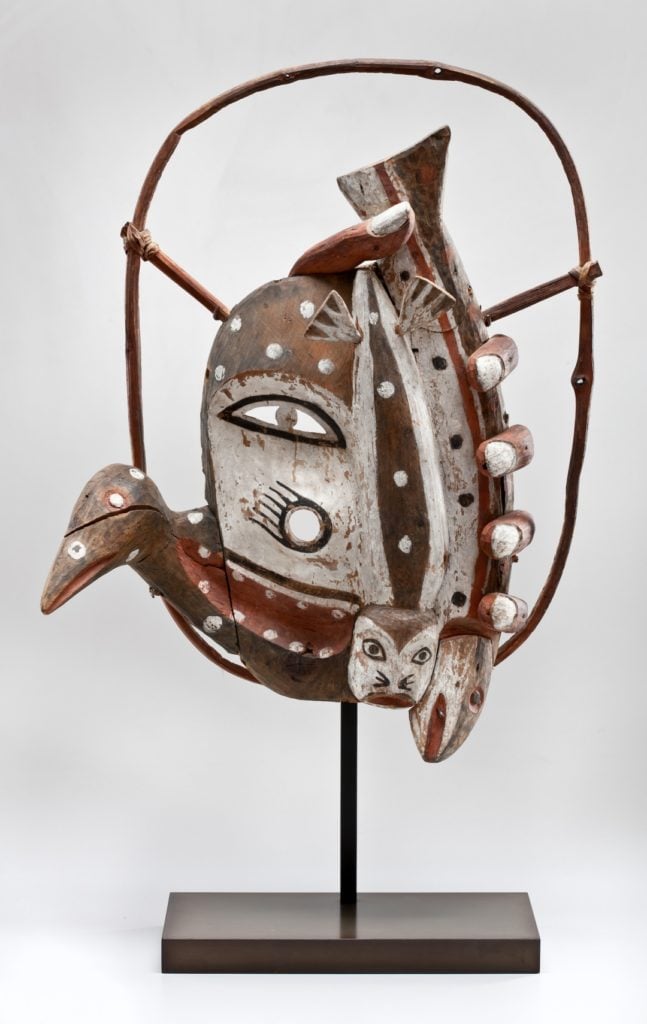Art World
The Metropolitan Museum Adds Native Art to Its American Wing for the First Time
Indigenous art finally takes its rightful place in American art history.

Indigenous art finally takes its rightful place in American art history.

Sarah Cascone

A rare gap in the encyclopedic collection of New York’s Metropolitan Museum of Art is about to be filled: The museum has announced the promised gift of 91 works of Native American art from Charles and Valerie Diker, which it plans to add to its American Wing.
Up until now, indigenous art has been shown separately from the rest of the nation’s artistic output, in the Arts of Africa, Oceania and the Americas galleries. Now, for the first time, Native art will be united with that of artists of European descent, such as early American greats as Gilbert Stuart and John Singer Sargent, presenting a united geographic front that offers a more comprehensive view of American art history.
“This transformative gift marks a turning point in the narratives presented within the American Wing,” said Carrie Rebora Barratt, the Met’s deputy director for collections and administration, in a statement. “With the addition of these works, the Met will be able to offer a much richer history of the art of North America, one that will include critical perspectives on our past and represent diverse and enduring native artistic traditions.”

Joseph No Two Horns, (He Nupa Wanica), shield (Hunkpapa Lakota, Standing Rock Reservation, North Dakota, 1885). Courtesy Metropolitan Museum of Art, promised gift of Charles and Valerie Diker, photo by Dirk Bakker.
The gift follows the success of the Met’s critically acclaimed 2015 exhibition, “The Plains Indians: Artists of Earth and Sky,” which featured works spanning over 2,000 years.
Works from the Diker collection were recently on view at the museum in “Native American Masterpieces from the Charles and Valerie Diker Collection” (October 28, 2016–March 31, 2017). “Indigenous Beauty: Masterworks of American Indian Art from the Diker Collection,” a traveling exhibition organized by the American Federation of the Arts, appeared in Seattle; Fort Worth, Texas; Atlanta; and Toledo, Ohio, in 2015–16.
Over the past 20 years, the couple, who live not far from the Met on the Upper East Side, have donated an additional 20 pieces to the institution. The Dikers have been collecting since the 1960s, starting with American contemporary art before branching out to pre-Columbian work in South America and finally the indigenous art of their home country.

Unrecorded Yup’ik artist, dance mask (Yup’ik, Alaska, 1900). Courtesy Metropolitan Museum of Art, promised gift of Charles and Valerie Diker, photo by Dirk Bakker.
“Valerie and I are honored to share the remarkable work of these Native American artists with the public, especially as an integral part of the broader story of American creativity,” said Charles Diker in a statement.
The full extent of their gift will be unveiled in a special exhibition of over 100 artworks at the Met in fall 2018, organized by guest curator Gaylord Torrence, the senior curator of American Indian art at the Nelson-Atkins Museum of Art in Kansas City, Missouri. Works include woven baskets, ceramics, clothing, and drawings, ranging from the second century through to the early 1900s.
“We always felt that what we were collecting was American art,” Diker added, speaking to the New York Times. “And we always felt very strongly that it should be shown in that context.”